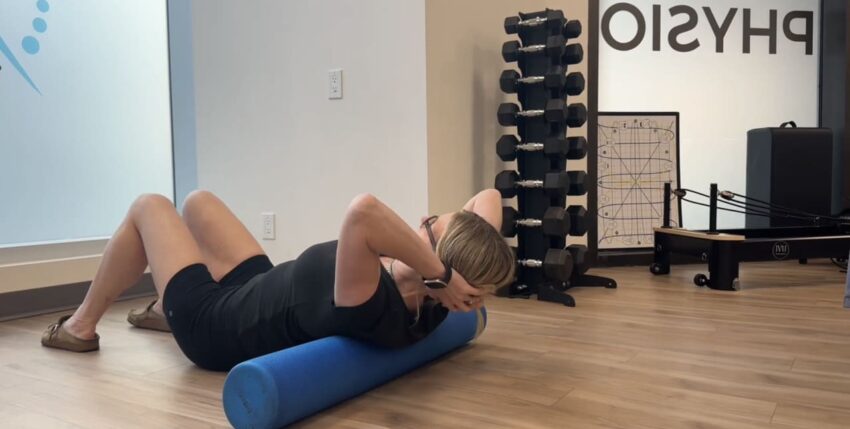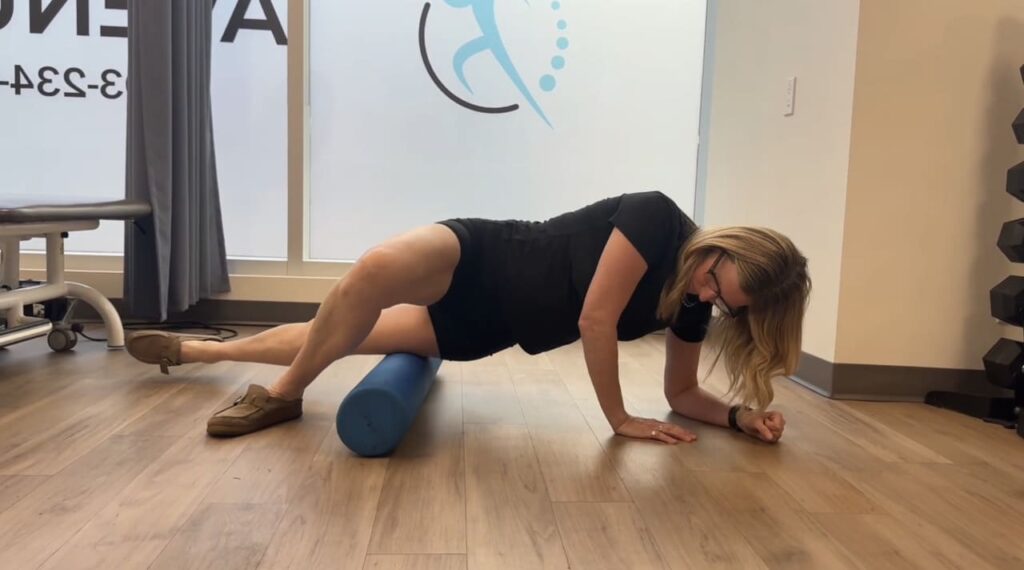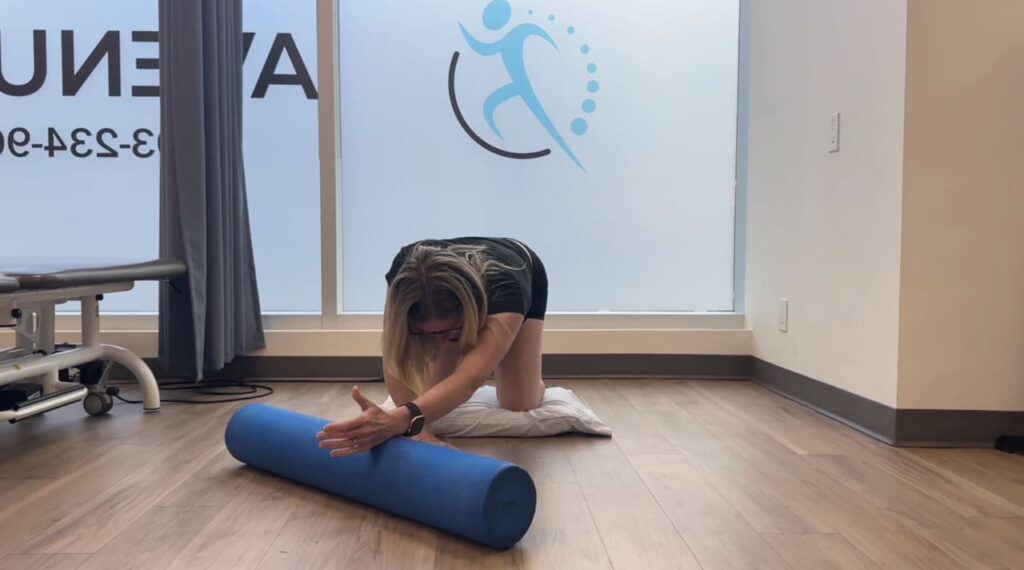


Foam rollers are everywhere these days—gyms, living rooms, even under people’s desks at work. They’re affordable, easy to use, and can feel pretty good. But what’s actually happening when you use one? And just as importantly—what isn’t?
At Avenue Physio in downtown Calgary, we hear this question all the time. Foam rolling can be a useful part of recovery and mobility, but it’s not a magic fix. Here’s a clear look at what the research says, how to do it properly, and when it’s most useful.
Foam rolling started out as a niche physiotherapy and dance rehab tool in the 1980s. By the early 2000s, it had spread into gyms and strength training programs, largely because athletes liked how it made them feel before and after workouts. Today, it’s mainstream—used by everyone from marathon runners to office workers who sit too long.
– Helps with soreness: Rolling can take the edge off post-workout muscle tightness.
– Loosens things up: You’ll usually notice more flexibility right after.
– Gets blood moving: The pressure improves circulation and tissue hydration.
– Body check-in: It helps you notice tight or tender areas that may need extra attention.
Foam rolling works through your nervous system, not by “smashing” tissue.
– Pressure stimulates sensory receptors in your muscles and fascia.
– The nervous system responds by reducing muscle tone and tension.
– Blood flow increases, which helps you feel looser and more comfortable.
That’s why the effects are mostly short-term—a few minutes to a few hours. For longer-term changes, you need strength and mobility work.
✅ It does:
– Reduce soreness and stiffness (short-term)
– Improve flexibility and mobility for a little while
– Provide a relaxation effect
❌ It doesn’t:
– Break up scar tissue or “release” fascia (that’s a myth)
– Replace stretching, strength training, or proper rehab
– Fix injuries on its own

Think of foam rolling as a self-massage rather than “breaking knots.”
– Roll slowly—about 1–2 minutes per muscle group.
– Pause and breathe on tender spots.
– Use before a workout to loosen up or after to wind down.
Foam rolling works best when it’s paired with stretching or mobility drills.
– Roll first → then move.
– Example: roll calves, then do ankle mobility drills.
– Especially helpful for hips, calves, and mid-back—perfect for office workers downtown who spend long hours sitting.
Foam rolling won’t build strength or stability on its own. But it can prime your muscles so they activate better.
– Roll your glutes → then do bridges or clamshells.
– Roll your upper back → then add planks or bird dogs.
– Think of it as: release tension → train control.
Good to roll:
– Quads & IT band region (front and side of thigh)
– Glutes & hips
– Calves
– Upper back
– Lats (side of ribcage)
Tip: If you’re not sure how much pressure to use, start light. You don’t need to grind yourself into the roller to get the benefits.
Foam rolling is safe for most people, but there are times to skip it:
– Recent injuries (sprains, fractures, open wounds)
– Severe osteoporosis or clotting conditions
– Sharp, nerve-like pain during rolling
If you’re unsure, check with a physiotherapist before starting.
Foam rolling is most effective when it’s part of a bigger plan. At Avenue Physio, we combine it with stretching, strengthening, and hands-on treatment.
Examples:
– Runner with calf tightness: roll calves → stretch ankles → strengthen calves.
– Desk worker with stiff back: roll mid-back → mobility drills → posture training.
– Weightlifter with tight shoulders: roll lats → stretch overhead → stability training.
Here’s a quick full-body routine you can try:
1. Quads – 1 min each side
2. Glutes – 1 min each side
3. Calves – 1 min each side
4. Upper back – 2 mins
5. Finish with a stretch or stability drill

Myth: Foam rolling breaks up scar tissue.
Fact: It influences your nervous system, not your tissues.
Myth: The harder the pressure, the better.
Fact: Slow, gentle rolling works just as well (and is often more effective).
Myth: You need a fancy roller.
Fact: A basic roller gets the job done.
How long should I foam roll?
About 1–2 minutes per muscle group.
Before or after workouts?
Either—before for mobility, after for recovery.
Should it hurt?
It might feel uncomfortable, but sharp pain means stop.
Can it replace stretching?
No—it’s a complement, not a replacement.
Do I need a spiky or vibrating roller?
Not really. A simple roller is enough.
Foam rolling is a great tool—but just one tool. It won’t solve everything, but when used properly, it can help you move better, recover faster, and stay active.
At Avenue Physio, we show our patients how to use rolling alongside strengthening, mobility, and hands-on care. That’s how you get real, lasting results.
👉 Want to learn how foam rolling fits into your body and lifestyle? Book an appointment with one of our downtown Calgary physios today.
[Book Your Appointment]